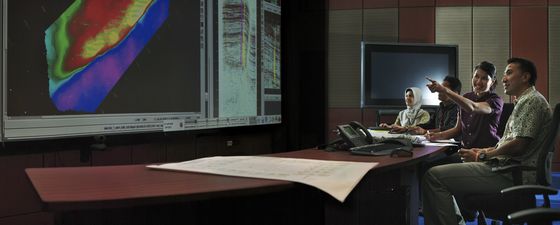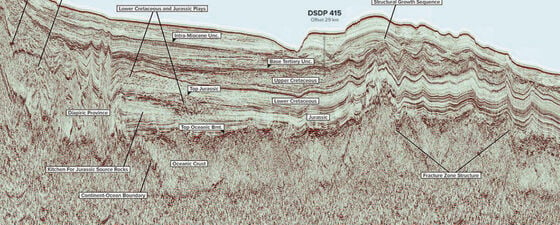A seismic interpretation project planning tutorial
As geophysicists, project leaders and managers, between us we have many decades of experience of seismic acquisition and interpretation projects, including central California, deepwater Brazil, the UK continental shelf, offshore West Africa, the Middle East, China and Australia. The motivation behind this short article is simply to distil some of the lessons we have learned so we can pass them on to future projects and interpreters. This will help our technical community to plan projects, communicate with key stakeholders and maximise the business impact from our geophysical work.
Step Away from the Mouse
The start of a seismic interpretation project is an exciting phase in most interpreters’ work life. Data are new and interesting, optimism and energy abound, problems have yet to appear and the prospect of success seems high. There is a compelling urge to load the data and start correlating horizons and faults as soon as possible. But perhaps this is a good time to pause and consider the business drivers for and constraints upon the work. How can we help earth science ‘free spirits’ undertake the challenging, although perhaps more mundane, task of developing a well-defined interpretation project plan endorsed by a broad range of stakeholders? Just as we sometimes wish we could help our engineering colleagues understand subsurface uncertainty, this paper is intended to help stimulate dialogue with our earth science colleagues to build a broader understanding of the benefits of project management.
Identify key roles and responsibilities. (Source: Chevron Image Library)
Interpretation Check List
A pre-correlation interpretation checklist (Table 1) can be used to set a solid foundation for the project.
For larger projects, this should take a team 3-5 days to complete. For smaller projects, an individual interpreter spending a few hours considering the steps within the workflow will add value and provoke critical questioning and review. In either case, our experience is that it will increase the probability of a successful project outcome. Each step needs a key question to be answered. The key customers for this document could include management during business planning, stakeholders to clarify inputs and outputs, or less experienced interpreters in dialogue with their mentors.
Let’s look at the items on Table 1 in more detail.
Table 1: Pre-correlation Interpretation Checklist
Roles and Responsibilities
1. Who initiated the seismic interpretation project? Do they view it as a core part of the business, a necessary evil or ‘nice to have’? What is their status and influence in the organisation when it becomes time to secure resources or budget, and to agree priority, schedule and milestones?
2. Who is accountable for the success of the project? Who will my supervisors and managers consider responsible if the interpretation is a partial or complete failure? Has the accountable manager experience and understanding of the interpretation process?
3. Who are the primary and secondary customers? A primary customer could be an asset team/asset manager waiting on maps for a new development well location. A secondary customer would be the drilling department also waiting for the new location, the team handling environmental and government approvals, or peer review panels.
4. What are the team’s skills, experience and availability? Are they immediately available or will only be available when a current project is completed? Where are they located? What is the experience level of the interpreters? Does the interpretation require the support of subject matter experts (e.g. velocity modelling, depth conversion, well-to-seismic ties, reservoir properties from seismic)? Is technical computing support available if needed?
5. Who do you depend on, and who depends on you? Any interpretation is part of a broad network within the business, so identify who the team is connected to (Table 2). For whom are you the customer, and who are your customers?
Table 2: Dependencies.
Project Management
6. What are the business drivers for interpretation? Seismic data are used for a wide variety of purposes (Table 3). What is the impact and timing of deliverables? Who is going to make the decisions, where are the decision-makers located, when do these business decisions need to be made, and is there any flexibility in the timing? Do no more work than is needed to make a high-quality decision.
Table 3: Business Drivers for Interpretation.
7. Is the interpretation workflow novel or iterative? Is interpretation part of processing – e.g. building shallow or overburden velocity models? How does technology enable the integration of different data types e.g. InSAR, geomechanics, induced seismicity?
8. Which well and seismic data exist, in what condition? Is the well and seismic data in one up-to-date database and immediately available for use (Table 4)? Or are data spread across various projects or perhaps not even loaded yet? Have data been quality controlled by you or a trusted colleague? Are seismic cubes and well bores in the correct position? Have wireline logs been depth corrected and quality controlled by a petrophysicist? Is there one unambiguous set of master well picks?
Table 4: Interpretation Data and Information.
9. Which quality assurance peer reviews and quality control products are expected? How do the interpreter and the customers evaluate the integrity of the interpretation and deliverables? What products do you need to produce to gain their confidence? Examples may include velocity models, average velocity maps, critical well-to-seismic ties, isopach maps, dip and strike seismic panels.
10. Are expectations for documentation clear and realistic? Are there gaps, inconsistencies and areas where further work is needed? Will this be a set of slides, a written report and/or a published paper? Is the quality of documentation compromised by deadlines, budgets, fatigue at the end of project, or the writing skills of the team?
11. What are the top 3-5 risks that could cause this interpretation to fail? Contemplate failure. In no more than 15 minutes, brainstorm a list of how the interpretation project could fail. From the list, rank the risks based upon perceived probability and impact. Does the seismic interpretation project plan address the top 3-5 ranked risks?
12. Which products have priority and when is delivery? The priority deliverables and timing can be summarised in an objective statement which is simple, specific and unambiguous.
13. What is the budget, and what happens if it is over or under spent? The desire to contain costs when starting a project is often balanced by unpredicted complexities during interpretation. If interpretation is part of a joint venture, then formal partner approval may be required for budget supplements as specified by the Joint Operating Agreement.
14. Is the schedule introducing ergonomic risk? One important check on the schedule, when considered alongside the skills and experience of interpreters, is the potential for Repetitive Strain Injury when working under tight deadlines. Seismic interpretation is amongst the most mouse-intensive of any computer activities. If the project schedule cannot be achieved without incurring RSI risk, go back to the Project Initiator and/or Project Owner to adjust resources or timelines accordingly.
15. How will the project get started and progress be monitored? Regular ‘tactical’ updates can be given at meetings every 1-2 weeks, while more substantial interim updates and refocusing of larger projects can be held at face-to-face group meetings every few months.
16. Will there be further work during the lifecycle of the dataset? Seismic data may have a long lifetime, and interpretation may change with new interpreters, business challenges, insights or reprocessing as technology evolves.
Check with stakeholders to understand the business drivers. (Source: Chevron Image Library)
Consult Before You Commit
We have based this checklist on our experience as geophysicists leading cross-functional teams using seismic data to drive business decisions. We hope you find this checklist useful to improve the quality of your interpretation projects, and their business impact.
Plan before you pick, and consult before you commit.
Further Reading
For those interested in further development of project management skills, there is a very rich literature in publications such as The Project Management Journal, the European Management Journal, Project (the official journal of the Association of Project Management), and Society of Petroleum Engineers (e.g. SPE-102926).





